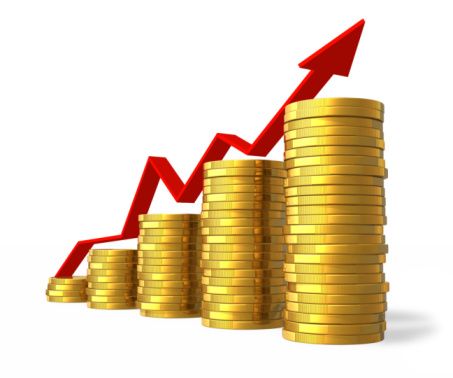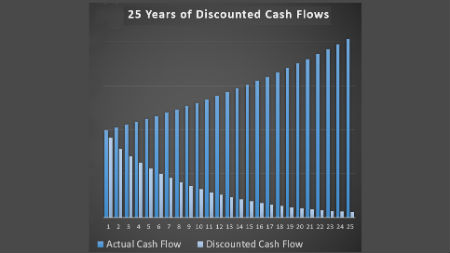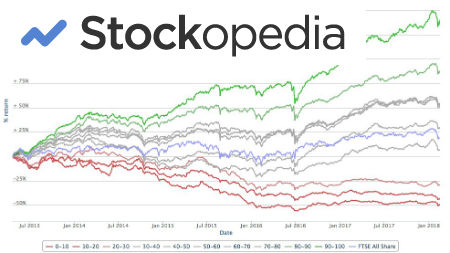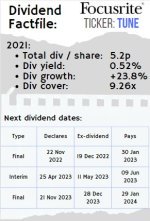Dividend Advantages 6-10
(Click here for advantages 1-5)
6) Dividend stocks have historically outperformed the market (probably the best of the dividend advantages!)

In "Stocks for the Long Run", Jeremy Siegel expands his explanation of dividend advantages by showing that the stocks with the highest dividend yield outperform the overall market: "If an investor put $1,000 in an S&P index fund at the end of December 1957, she would have accumulated $201,760 by the end of 2012 for an annual return of 10.13 percent. An identical investment in the 100 highest dividend yielders accumulated to over $678,000, with a return of 12.58%."
Several studies have shown that over the long run dividend-paying stocks have outperformed non dividend-paying stocks. In fact, according to Professors Fama and French dividend payers returned 10.4% per annum between 1927-2014, compared to 8.5% per annum for non payers over the same period.
7) Dividends can help you psychologically as an investor

Having cash show up regularly in your checking or brokerage account is another of the dividend advantages because it can help you think more like a business owner.
Considering how this cash is being generated and whether it is likely to be sustainable is a change in psychology from simply following the stock price and may help you when you are looking into the detail of the company's financial statements.
Regular dividends can also help you ignore the day-to-day fluctuations in the stock market. You are probably not going to be as concerned about the stock price dropping by a few percentage points if you are confident the company is going to carry on paying you your dividend. In fact, it is one of the dividend advantages to know when to use the lower share price to purchase more shares and help you with the 'return accelerator.'
There is a good saying, "revenue is vanity, profit is sanity, cash is reality." Cash cannot be manipulated like profit in the annual report can.
A lot of judgment is needed to produce a company's profit number, such as getting the correct asset values or using the correct depreciation calculation. Dividends, however, represent real cash paid to you and cannot be faked. Therefore the cash paid to you is reality!
8) Dividends are usually more stable than earnings and stock prices.
It serves as another of the clear dividend advantages that managements are extremely reluctant to cut dividend payments to shareholders. Doing so can be very damaging to a company's reputation as it signals a downturn in the company's fortunes. Therefore, management teams usually do all they can to preserve dividend payments.
This sometimes means management will continue to pay a dividend even if earnings have dipped. The company may even dip into their reserves or borrow to continue to pay the dividend (look at some of the oil majors in 2016).
Of course, this cannot continue forever as ultimately there must be earnings to support the dividend but if management see the earnings downturn as temporary or cyclical then often they will move mountains to preserve the dividend payments.
In Ben Graham's famed book "The Intelligent Investor", he looked at average earnings and dividends between 1900 and 1970 and found that average earnings increased in every decade apart from the 1930s and average dividends increased in every decade INCLUDING the 1930s. Dividends have continued to grow in every decade since the 1970s, highlighting how dividend payments tend to be more stable than both average earnings and stock prices.
Over time, it is another of the dividend advantages that they can act as an inflation hedge as companies with pricing power are able to pass on their own price increases. This would eventually result in restoration of their margins which should lead to higher earnings and therefore higher dividends to compensate for inflation.
9) Dividends can help you make an accurate valuation and therefore avoid overpaying for stocks
We are believers in value investing ... and one metric of value is the dividend.
The dividend helps you think about what you are getting in return for the investment you make. Automatically this should attract you to stocks that have higher yields.
Of course, it is important that you consider how sustainable those dividends are. Please have a look at our article on dividend safety for more information on this.
For the same reasons, dividends can help you avoid overpaying as very low yields should make you question how expensive the stock is. We think you should avoid stocks with very low yields that trade on very high price/earnings (p/e) ratios, unless you are very confident of exceptional earnings growth. Avoiding stocks with low yields and high p/e ratios help you build in what Ben Graham calls a "margin of safety" into your stock purchases.
10) Dividends are often taxed lower than ordinary income.
The tax rate you pay on dividends depends on your marginal tax rate, where you live, and how you hold the investments. One of the largest dividend advantages is that these tax levels are often lower than receiving income from labor (your job!), your savings, property rental payments, and, in some jurisdictions, the capital gains rate (i.e. the profit made on the sale of shares for more than you bought them for).
If you live in the United States and your dividends are "qualified" dividends then your federal tax rates on dividends will be nothing if your income is in the 10-15% tax brackets, the rate will be 15% if your income is in the 25%-39.6% tax bracket, and your rate will be 20% if you are lucky enough to have income in the 39.6% tax bracket.
You may also need to pay a 3.8% medicare surcharge and state taxes on top. Unqualified dividends are taxed at your ordinary income tax rate.
Dividends are also taxed at lower levels than income in other countries. For example, in the UK you have a £5,000 dividend tax allowance (although being reduced to £2,000) and then the rates are 7.5%, 32.5%, and 38.1% for basic, higher and additional rate payers respectively.
In Australia, many companies pay franked dividends which means that when a company pays corporation tax, the investor receives franking credits to offset the corporation tax against your income tax. This is a reason why Australian companies have traditionally had higher payout ratios as you avoid the "double tax" problem of many other countries.
You could also consider holding shares in a tax sheltered (or at least more favorable) account such as your 401(k) or roth IRA in the US, your ISA or pension fund in the UK or your superannuation in Australia.
Above is only a very basic summary on taxes. Please speak to your financial advisor about your own personal tax situation and how best to structure your investments accordingly.
We'll leave you one final thought when it comes to dividends. According to Ian Mortimer and Matthew Page at Guinness Atkinson Funds, "If you had invested $100 at the end of 1940, this would have been worth approximately $174,000 at the end of 2011 if you had reinvested dividends, versus $12,000 if dividends were not included."
There are indeed many dividend advantages!
Got a BURNING dividend question for 6-figure dividend earner Mike Roberts?
What is it that you really want to know about investing?
Submit a query and Mike will write a page in response.
PLEASE NOTE - in accordance with our terms of use, responses are meant for education / interest only. We do not give specific financial advice.



